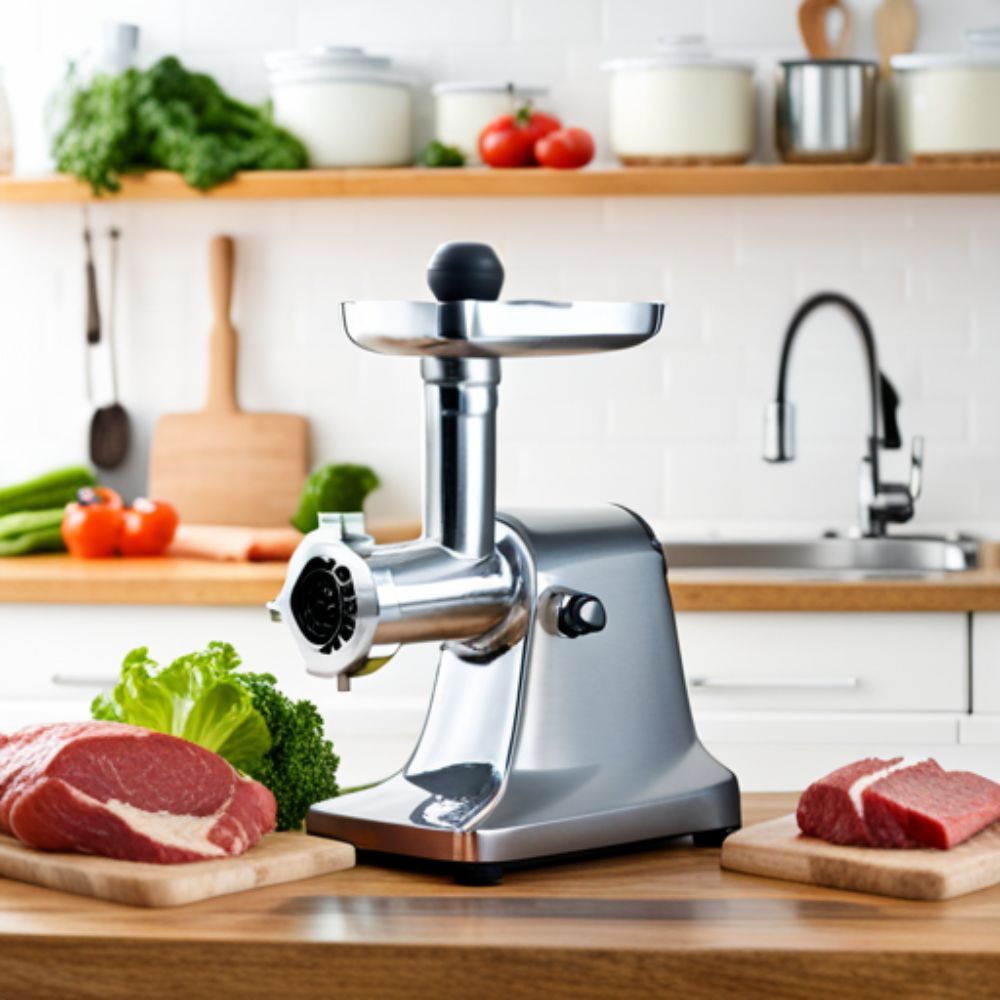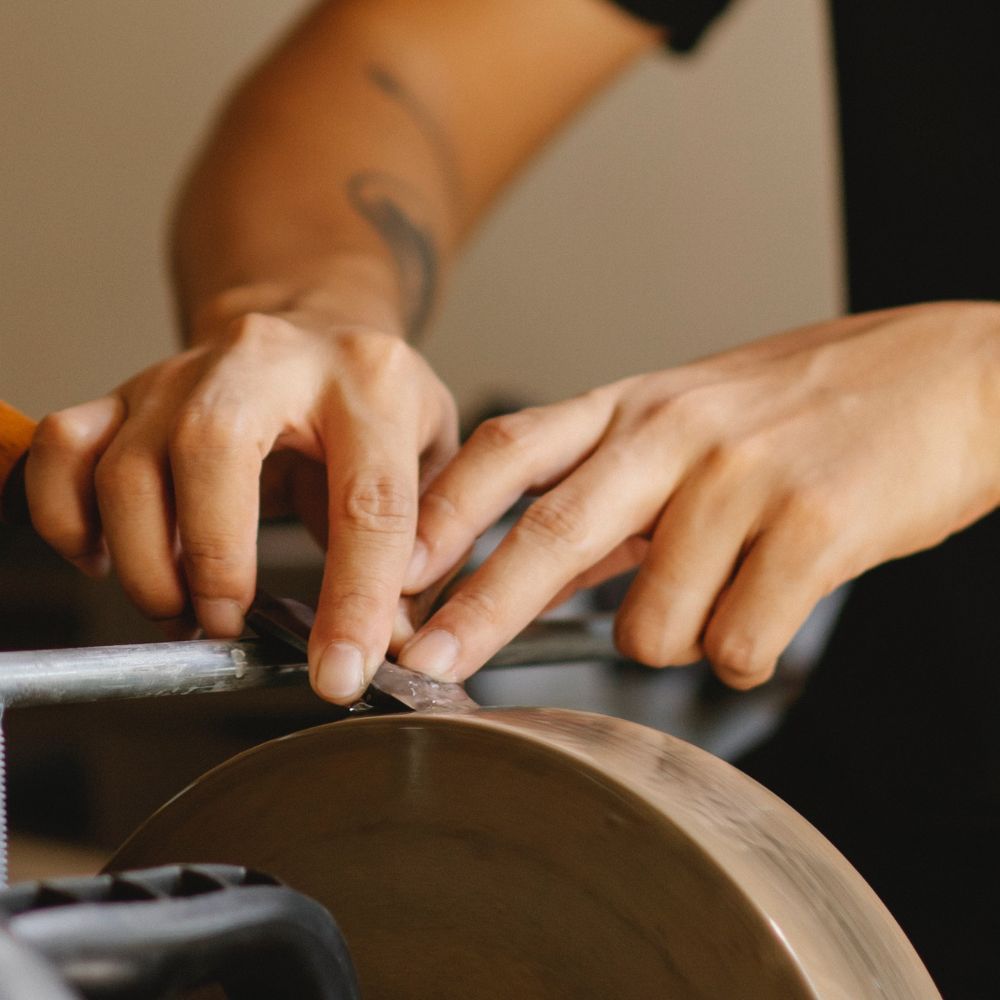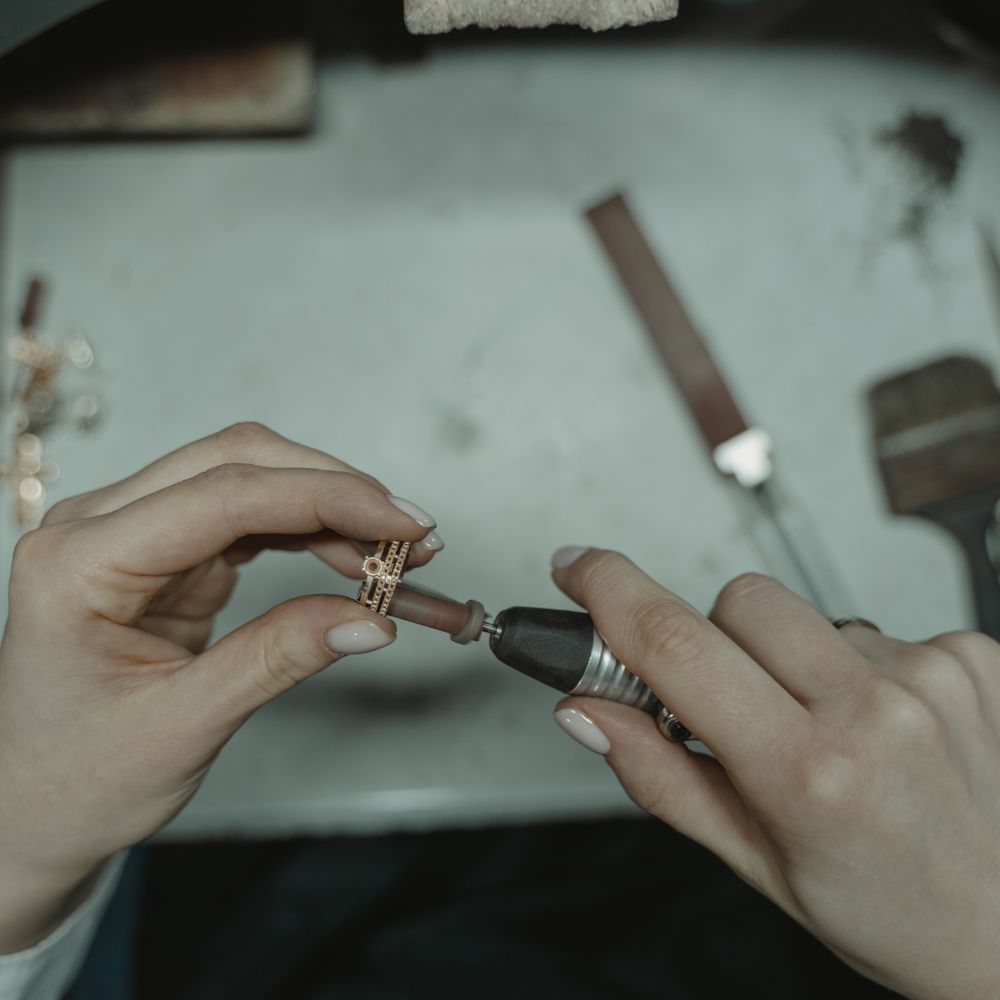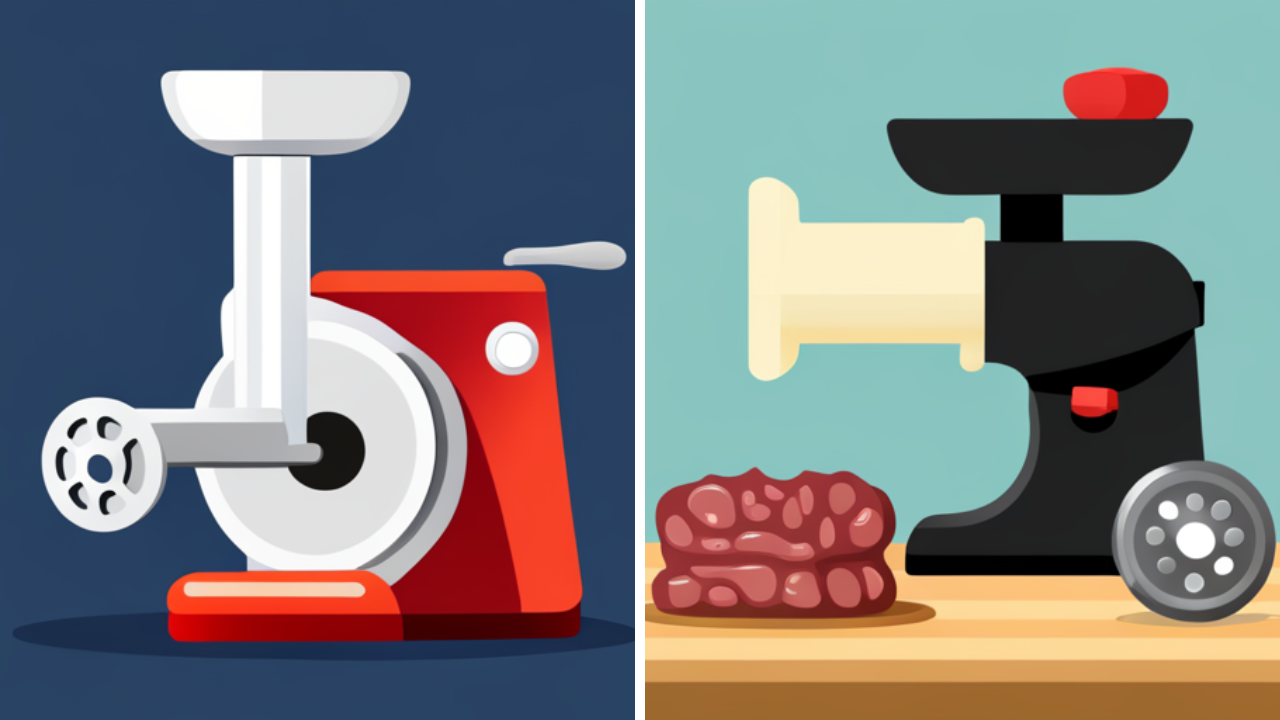Meat grinders have become an indispensable tool in our daily culinary adventures.
From making fresh burgers to sausages, they offer the convenience of grinding fresh meat just the way we like it.
However, like all tools, they require regular maintenance to function optimally.
One of the most crucial aspects of this maintenance is ensuring that the blades remain sharp.
In this article we will dive into the how to sharpen meat grinder blades and why it is important to keep them that way. Sharp blades not only make the grinding process smoother but also ensure the longevity of the grinder.
Short Summary
- The importance of meat grinders and maintaining sharp blades.
- Discussion on causes that lead to the dulling of meat grinder blades.
- Importance of sharpening meat grinder blades for safety and efficiency.
- Various methods to sharpen meat grinder blades, including using honing rods, whetstones, sharpening steel, and more.
- Tips on how often to sharpen blades based on usage.
What Causes Meat Grinder Blades to Become Dull?

Meat grinder with dull blades
Over time, even the best meat grinder blades can become dull. Several factors contribute to this:
- Grinding Tough Meat: Regularly grinding tough cuts or sinewy meats can wear out the blades faster. This is especially true if the meat hasn't been properly prepared or trimmed.
- Not Cleaning the Grinder Properly: After each use, it's essential to clean the grinder thoroughly. Meat residues, if left on the blades, can dry and make the blades dull. Regular cleaning ensures that the blades remain sharp and free from any meat residues. Check out this Knife Maintenance and Care guide for more tips on maintaining sharp tools.
- Storing in a Humid Environment: Blades can rust or corrode if the grinder is stored in a damp or humid environment. This not only dulls the blade but can also pose health risks.
- Using the Grinder for Other Purposes: Meat grinders are designed specifically for grinding meat. Using them to grind other hard substances can damage the blades. Always ensure you're using the grinder for its intended purpose.
- Natural Wear and Tear: Like all tools, meat grinder blades are subject to natural wear and tear. Regular use will inevitably lead to the blades becoming dull over time. However, with proper care and regular sharpening, as described in this Professional Knife Sharpening Techniques guide, you can prolong the life of your blades.
Understanding these causes can help in taking preventive measures, ensuring that the blades remain sharp for a longer time and the grinder functions efficiently.
Why Sharpening Meat Grinder Blades is Important
Difficulty in Grinding with Dull Blades
When meat grinder blades become dull, they struggle to cut through the meat efficiently.
This results in uneven grinding, with some parts being too coarse while others might be too fine.
The grinder also requires more effort and time to process the meat, leading to inefficiencies in the kitchen. Safety Concerns
Dull blades can lead to the meat getting stuck or jammed in the grinder. This can cause the machine to malfunction or even break.
Moreover, trying to force the meat through can result in accidents or injuries.
Longevity of the Meat Grinder
Regular maintenance, including sharpening the blades, ensures that the meat grinder lasts longer.
Dull blades make the grinder work harder, leading to wear and tear. Keeping the blades sharp reduces strain on the machine, ensuring it remains functional for years.
Disassembling the Meat Grinder to Access the Blades
- Unplug the meat grinder or ensure it's turned off.
- Remove the retaining ring or nut, usually found at the front of the grinder.
- Take out the grinding plate.
- Access and extract the blade, which sits behind the plate.
- Pull out the auger or worm, the spiral-shaped piece.
- Clean each part separately before reassembling.
Note: Check your products user manual for more specific instructions on how to access the blades for your type meat grinder.
Methods to Sharpen Meat Grinder Blades

Bench Grinder
Using a Honing Rod
Description and Process:
A honing rod, often used for kitchen knives, can also be effective for sharpening meat grinder blades. The rod helps in realigning the blade's edge, making it sharper. To use a honing rod:
1. Hold the rod vertically with its tip resting on a stable surface.
2. Hold the blade at an angle and slide it downwards against the rod, ensuring you cover the entire length of the blade.
3. Repeat the process for both sides of the blade until sharp.
Regular honing maintains the blade's sharpness, ensuring efficient grinding and prolonging the life of the meat grinder.
Using a Whetstone
Different Grits and Their Uses:
Whetstones come in various grits, which determine the fineness of the sharpening:
- Coarse Grit (200-800): Ideal for repairing chipped edges or very dull blades.
- Medium Grit (1000-1500): Used for general sharpening. It's perfect for blades that are slightly dull but not damaged.
- Fine Grit (2000-8000): For refining and polishing the blade's edge, giving it a razor-sharp finish.
Sharpening Process:
1. Soak the whetstone in water for about 10 minutes.
2. Place it on a stable surface with the coarse side up (if it's a dual-sided stone).
3. Hold the blade at a 15-20° angle and slide it across the sharpening stone in a sweeping motion.
4. Repeat the process on both sides until the blade is sharp.
5. If using a dual-sided stone, flip to the finer grit and repeat the process for a polished finish.
Using a Sharpening Steel

Sharpening Steel
Description and Process:
Sharpening steels, often confused with honing rods, are tools designed to sharpen knife blades, and they can be used for meat grinder blades too.
1. Hold the sharpening steel vertically with its tip resting on a stable surface.
2. Position the blade at a 15-20° angle to the steel.
3. Starting from the base of the blade, slide it downwards against the steel while moving it from the base to the tip of the blade.
4. Repeat the process for both sides of the blade until it's sharp.
Regular use of a sharpening steel maintains the blade's edge, ensuring it cuts efficiently and safely.
Using a Bench Grinder
Safety Precautions:
Before using a bench grinder, it's essential to ensure safety:
- Wear Safety Goggles: Protect your eyes from sparks and debris.
- Use Ear Protection: Bench grinders can be loud, and prolonged exposure can harm your hearing.
- Secure the Grinder: Ensure the grinder is stable and firmly attached to the bench.
- Check the Grinding Wheel: Ensure it's free from cracks or damages before starting.
Sharpening Process:
1. Turn on the bench grinder and let it reach full speed.
2. Hold the blade at the correct angle (usually 20-30°) against the grinding wheel.
3. Move the blade side-to-side across the wheel, ensuring even sharpening.
4. Continuously dip the blade in water to prevent overheating.
5. Once sharpened, turn off the grinder and let the blade cool naturally.
Using a File
Process and Types of Files:
Files are manual tools that can effectively sharpen meat grinder blades properly:
- Mill File: A single-cut file ideal for sharpening flat surfaces.
- Half-Round File: Features both a flat and rounded side, suitable for various blade shapes.
- Tapered File: Narrower towards the tip, allowing for precision sharpening.
Sharpening Process:
1. Secure the blade in a vise or hold it firmly.
2. Choose the appropriate file type based on the blade's shape.
3. Hold the file at the correct angle to the blade.
4. Push the file away from you, following the contour of the blade.
5. Repeat the process, ensuring even sharpening on both sides of the blade.
Using a file offers more control over the sharpening process, ensuring a finely honed and sharp edge.
Using a Dremel

A dremel
Description and Process:
A Dremel is a versatile handheld rotary tool that can be equipped with various attachments, including grinding stones suitable for sharpening blades.
Process:
1. Attach a grinding stone to the Dremel.
2. Secure the meat grinder blade in a vise or hold it firmly.
3. Turn on the Dremel and set it to a medium speed.
4. Hold the tool at the correct angle to the blade and gently move it across the edge.
5. Ensure both sides of the blade are sharpened properly.
6. Turn off the Dremel and check the blade's sharpness.
Using an Electric Sharpener
Description and Process
Electric sharpeners are devices designed to sharpen blades quickly and efficiently, using motorized grinding wheels.
Process:
1. Turn on the electric sharpener.
2. Insert the blade into the designated slot.
3. Gently pull the blade through the slot, allowing the machine to sharpen it.
4. Repeat if necessary, ensuring even sharpening on both sides.
Using a Rotary Tool
Description and Process:
Rotary tools, similar to Dremels, are handheld devices equipped with various attachments. They offer precision and are suitable for detailed work.
Process:
1. Attach a grinding or sharpening attachment to the rotary tool.
2. Secure the blade in place.
3. Turn on the rotary tool and set it to an appropriate speed.
4. Hold the tool at the correct angle to the blade and move it across the edge.
5. Ensure even sharpening on both sides of the blade.
6. Turn off the rotary tool and inspect the blade for sharpness.
7. Wash the blades to remove any metal shavings or debris that be on the blade.
Each of these tools offers a unique approach to sharpening, allowing users to choose the method that best suits their needs and expertise.
How to Sharpen Meat Grinder Blades Without Any Tools

Use a pop can
Using a Rock:
Believe it or not, a smooth rock can act as a makeshift sharpening tool. Find a smooth, flat rock and wet its surface. Hold the blade at a 20° angle and slide it across the rock's surface, ensuring even sharpening on both sides.
Using a Can:
The top edge of a can, especially aluminum soda cans, is sharp and can be used to hone a blade. Hold the blade at an angle and slide it against the can's top edge, repeating the process until the blade is sharp.
How Often Should You Sharpen Your Meat Grinder Blades?
Frequency Based on Usage:
If you use your meat grinder regularly, it's advisable to sharpen the blades once every month. For occasional users, sharpening every 3-4 months should suffice.
Testing Blade Sharpness:
To test the blade's sharpness, try cutting a piece of paper. A sharp blade will cut cleanly, while a dull one will struggle.
Sharpening a Meat Grinder's Knife & Plate - 2 Guys & A Cooler
Conclusion
Maintaining the sharpness of meat grinder blades is crucial for efficient grinding and the longevity of the machine.
Whether you use specialized tools or makeshift methods, regular sharpening ensures safety and optimal performance.
If you are looking for a new meat grinder then check out our article and top picks on the best meat grinders.











